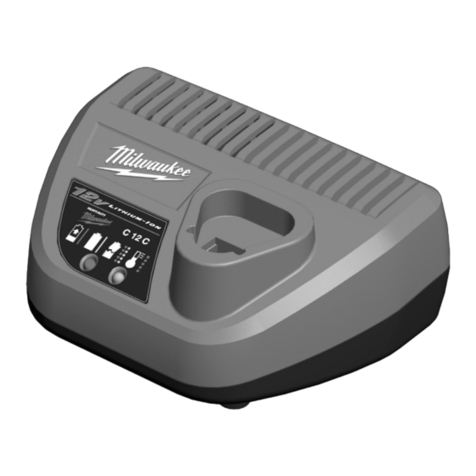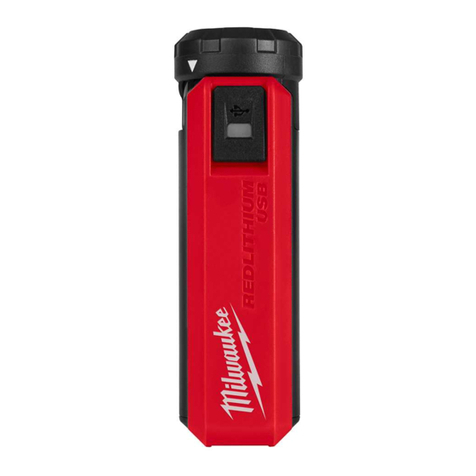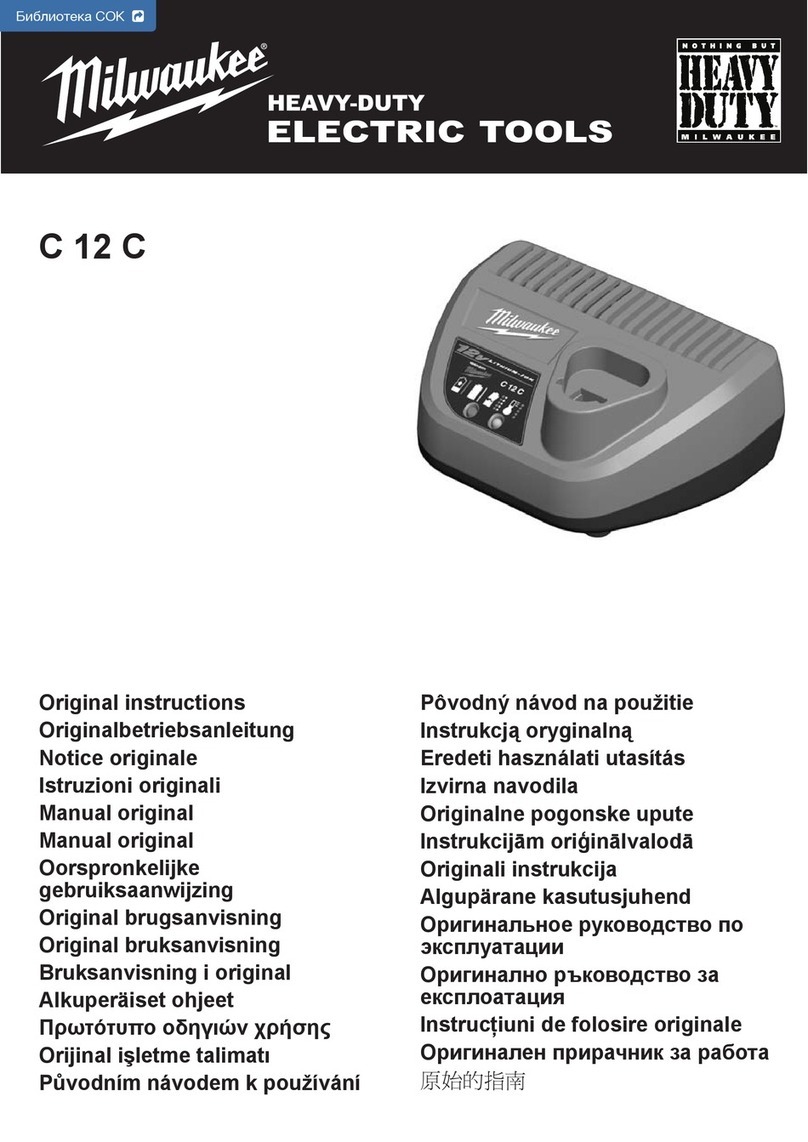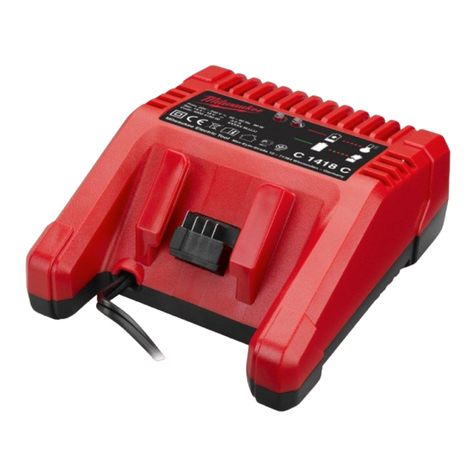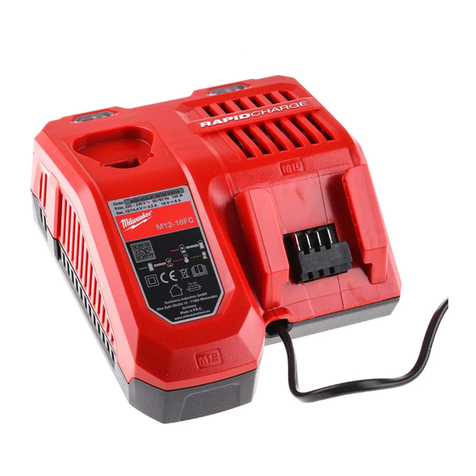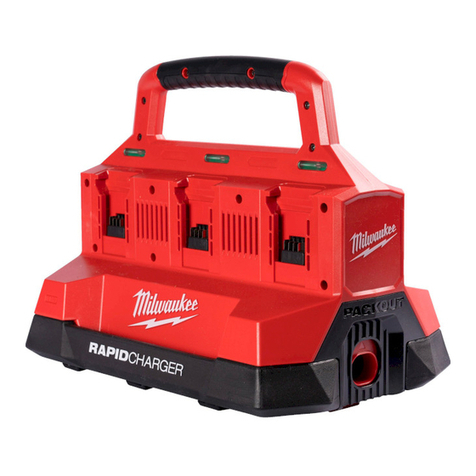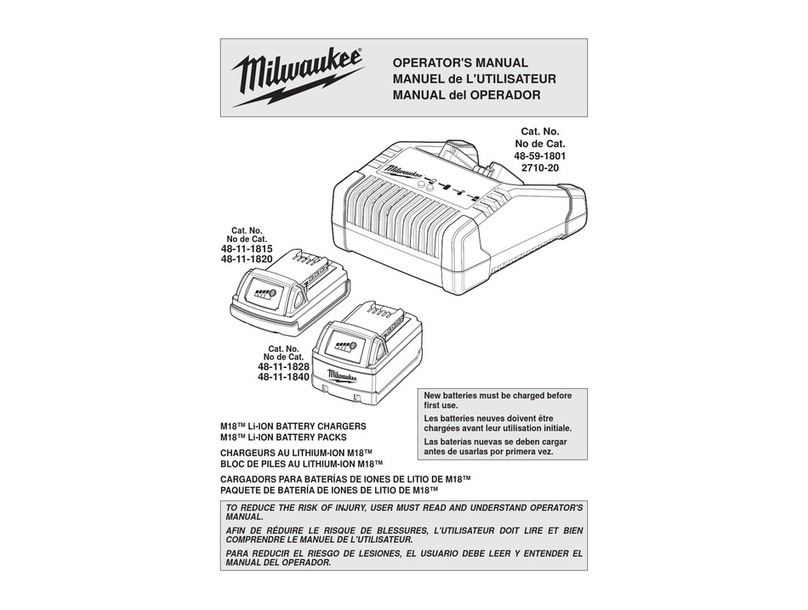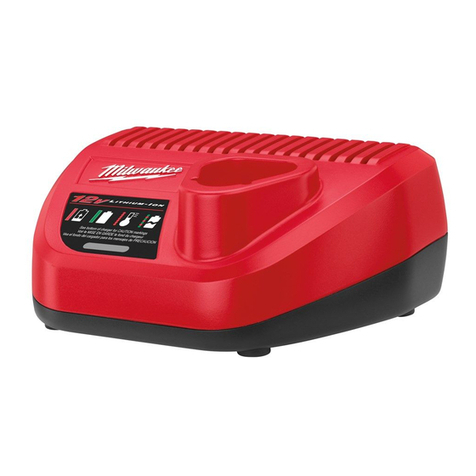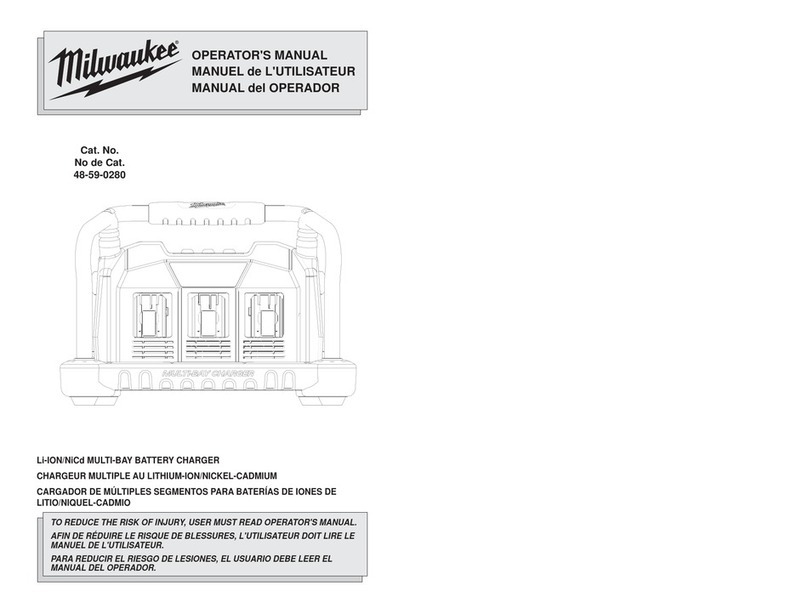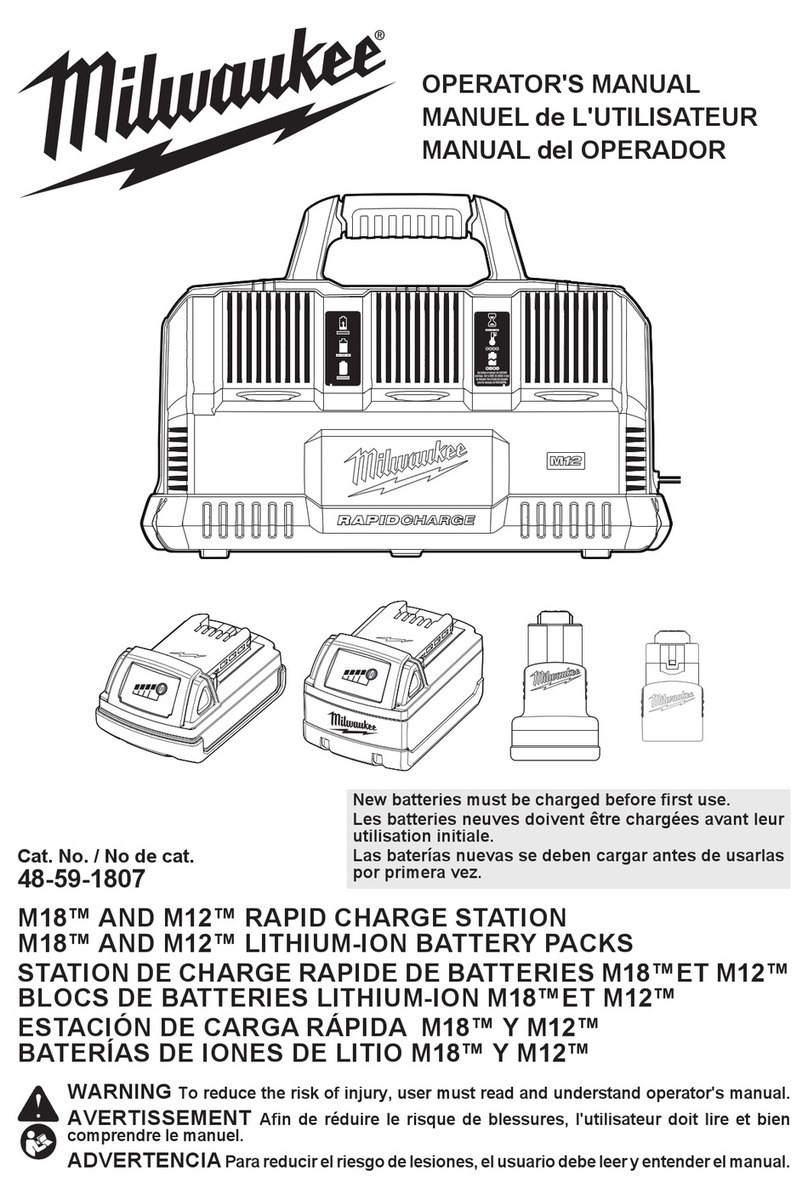
2
This operator's manual contains important safety
and operating instructions for MILWAUKEE M4™
Lithium-Ion batteries and the MILWAUKEE M4™
Lithium-Ion battery charger. Before using the batter-
ies and charger, read this operator's manual, your
tool operator's manual, and all labels on the battery,
charger and tool.
1.
TO REDUCE THE RISK OF IN-
JURY, CHARGE MILWAUKEE
M4™ LITHIUM-ION BATTERIES ONLY IN
MILWAUKEE M4™ LITHIUM-ION CHARGERS.
Other types of chargers may cause personal
injury or damage. Do not wire a battery to a
power supply plug or car cigarette lighter. Batter-
ies will be permanently disabled or damaged.
2. USEMILWAUKEEM4™LITHIUM-IONBATTER-
IES ONLY ON MILWAUKEE M4™ LITHIUM-ION
TOOLS. Use with other tools may result in a risk
of re, electric shock or personal injury.
3. AVOID DANGEROUS ENVIRONMENTS. Donot
charge battery in rain, snow, damp or wet loca-
tions. Do not use battery or charger in the pres-
enceofexplosiveatmospheres (gaseous fumes,
dust or ammable materials) because sparks may
begeneratedwhen inserting orremovingbattery,
possibly causing re.
4. CHARGE IN A WELL VENTILATED AREA. Do
notblockcharger vents. Keep themclearto allow
proper ventilation. Do not allow smoking or open
ames near a charging battery. Vented gases
may explode.
5. MAINTAIN CHARGER CORD. Whenunplugging
charger, pull plug rather than cord to reduce the
risk of damage to the electrical plug and cord.
Never carry charger by its cord. Keep cord from
heat, oil and sharp edges. Make sure cord will
not be stepped on, tripped over or subjected to
damage or stress. Do not use charger with dam-
agedcord orplug.Have adamagedcord replaced
immediatelywith identical replacementparts (see
“Maintenance”).
6. DO NOT USEAN EXTENSION CORD UNLESS
IT IS ABSOLUTELY NECESSARY. Using the
wrong, damaged or improperly wired extension
cord could result in the risk of re and electrical
shock. If an extension cord must be used, plug
the charger into a properly wired 16 gauge or
larger extension cord with pins that are the same
number, size and shape as the pins on the char-
ger. Make sure that the extension cord is in good
electrical condition.
7. CHARGER IS RATED FOR 120 VOLT AC ONLY.
Charger must be plugged into an appropriate
receptacle.
8. USE ONLY RECOMMENDEDATTACHMENTS.
Use of an attachment not recommended or sold
by the battery charger or battery manufacturer
may result in a risk of re, electric shock or per-
sonal injury.
9. UNPLUG CHARGER when not in use. Remove
battery from unplugged chargers.
10.TOREDUCE THE RISK OFELECTRIC SHOCK,
always unplug charger before cleaning or main-
tenance. Use a Ground Fault Circuit Interrupter
(GFCI) to reduce shock hazards.
11.DO NOT BURN OR INCINERATE BATTERIES.
Batteriesmayexplode,causingpersonalinjuryor
damage. Toxic fumes and materials are created
when batteries are burned.
12.DO NOT CRUSH, DROP, OR DAMAGE bat-
teries. Do not use a battery or charger that has
received a sharp blow, been dropped, run over,
or damaged in any way (e.g., pierced with a nail,
hit with a hammer, stepped on).
13.DO NOT DISASSEMBLE. Incorrect reassembly
may result in the risk of electric shock, re or
exposure to battery chemicals. If it is damaged,
take it to a MILWAUKEE service facility.
14.BATTERY CHEMICALS CAUSE SERIOUS
BURNS. Never allow contact with skin, eyes, or
mouth.Ifa damaged battery leaksbatterychemi-
cals,use rubber or neopreneglovesto dispose of
it. If skin is exposed to battery uids, wash with
soap and water and rinse with vinegar. If eyes
are exposed to battery chemicals, immediately
ush with water for 20 minutes and seek medical
attention. Remove and dispose of contaminated
clothing.
15.DO NOT SHORT CIRCUIT. A battery pack will
short circuit if a metal object makes a connection
betweenthe positiveand negativecontactson the
battery pack. Do not place a battery pack near
anything that may cause a short circuit, such as
coins, keys or nails in your pocket. Do not allow
uids to ow into battery pack. Corrosive or con-
ductive uids, such as seawater, certain indus-
trial chemicals, and bleach or bleach containing
products, etc., can cause a short circuit. Ashort
circuited battery pack may cause re, personal
injury, and product damage.
16.STORE YOUR BATTERY AND CHARGER in a
cool, dry place. Do not store battery where tem-
peratures may exceed 120°F (50°C) such as in
direct sunlight, a vehicle or metal building during
thesummer.Chargerwill charge thebatterywhen
the battery's internal temperature is between
14°F (-10°C) and 140°F (60°C). When the battery
temperature is outside that range, charging will
not occur.
READ AND SAVE
ALL INSTRUCTIONS
FOR FUTURE
REFERENCE.
GENERAL SAFETY RULES
READ AND UNDERSTAND ALL INSTRUCTIONS. Failure to follow all
instructions listed below, may result in electric shock, re and/or serious personal injury.
SAVE THESE INSTRUCTIONS
